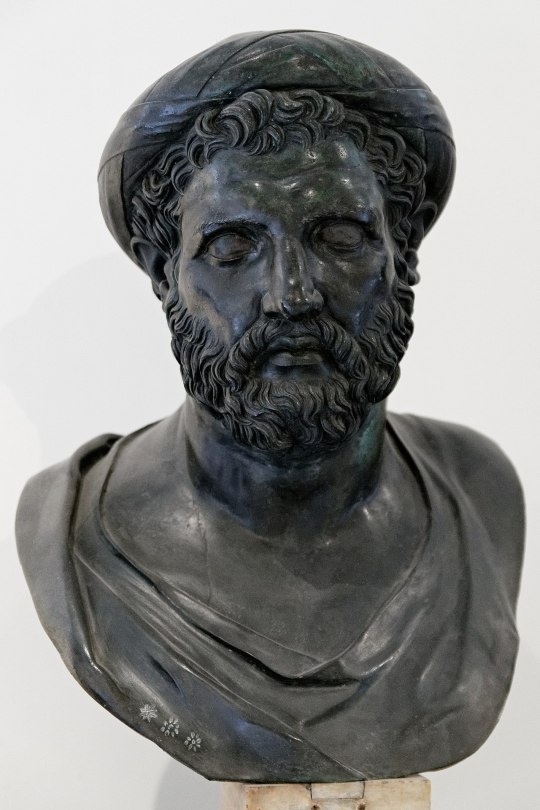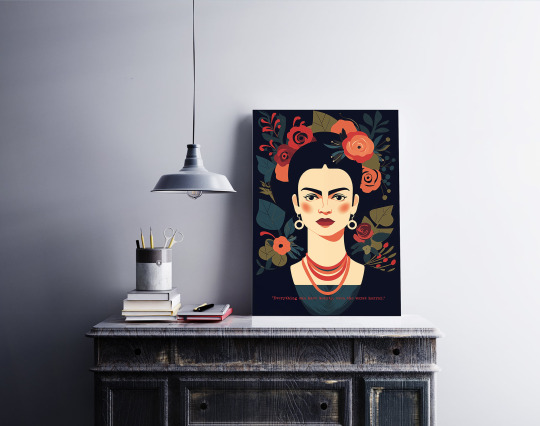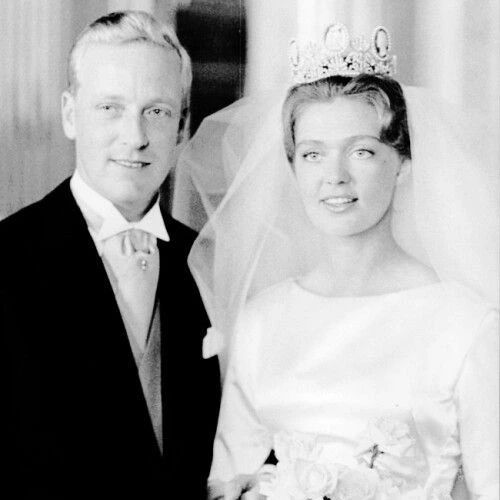#HistoricalFigures
Text
"A fool is known by his speech, and a wise man by silence."

Pythagoras, a Greek mathematician and philosopher, lived around 570-495 BCE. While much of his life is shrouded in mystery and legend, here are five lesser-known or potentially rare facts about Pythagoras:
Secretive Cult-Like Community: Pythagoras founded a secretive and exclusive community in Croton, Italy, known as the Pythagorean Brotherhood. The members of this community were bound by strict rules, including a vow of silence and a communal way of life. The group was not only interested in mathematics but also philosophy, mysticism, and religious practices.
Numerical Mysticism: Pythagoras and his followers believed in the mystical significance of numbers. They thought that numbers held inherent qualities and mystical properties. For example, they associated odd numbers with masculinity and even numbers with femininity. The number 10 was particularly significant and seen as a perfect and divine number.
Pythagorean Theorem was known before Pythagoras: While Pythagoras is credited with the famous Pythagorean Theorem, which relates the lengths of the sides of a right-angled triangle, evidence suggests that the theorem was known to the Babylonians and Indians before Pythagoras. Pythagoras, however, is often credited with its formal proof and popularization in ancient Greece.
Vegetarianism and Taboos: Pythagoras and his followers were known for their strict dietary restrictions. They practiced vegetarianism, believing that it was essential for purifying the soul. They also had various food-related taboos, such as avoiding beans, possibly due to their belief in the impurity associated with certain legumes.
Pythagorean Cup: Pythagoras is associated with the invention of the Pythagorean cup, also known as a "greedy cup" or "tantalus cup." It's a clever drinking vessel with a hidden mechanism that causes the cup to drain its contents if filled beyond a certain level. This invention is often attributed to Pythagoras as a symbolic lesson in moderation and self-control.
#Pythagoras#Mathematics#Philosopher#PythagoreanTheorem#MathHistory#GreekPhilosopher#Numerology#Mysticism#Mathematician#PythagoreanBrotherhood#AncientGreece#NumberTheory#MathEducation#Geometry#PythagoreanCup#MathTrivia#MathematicalPioneer#HistoricalFigures#MathLover#WisdomofPythagoras#quoteoftheday#today on tumblr
18 notes
·
View notes
Text
There are a lot of wonderful things about the month of July: Fireworks, warm weather, Tom Hanks’ birthday — though there has, as yet, been no response from the Senate to my petition to make the latter date an official holiday. However, July also means the end of the best time of the year: June, aka Pride Month.
14 notes
·
View notes
Text
Hussar - Historical Miniature
We are a miniature painting studio. If you need painting, converting, sculpting, assembling, LED lights - literally anything regarding the hobby, don’t hesitate - simply contact us via [email protected].
#Hussar - Historical Miniature#.#paintingminiatures#miniature#miniaturepainters#paintingmodels#miniatureart#modelpainting#hobby#scalemodel#miniaturepaintings#paintingminiature#painting#historicalfigure#historicalminiature#historicalfigures#historicalminiatures
8 notes
·
View notes
Photo

𝐐𝐮𝐞𝐞𝐧 𝐕𝐢𝐜𝐭𝐨𝐫𝐢𝐚'𝐬 𝐟𝐢𝐫𝐬𝐭 𝐥𝐨𝐜𝐤𝐞𝐭 A heart-shaped gold locket with the front engraved with an EV cypher (E for her father and V for her mother). The locket contains the hair of Duke Edward and Duchess Victoria of Kent. It reads " Present from her Mother to her beloved Victoria on the First Anniversary of her Birthday 24 May 1820. The gift from the Duchess of Kent was one of a group of jewels that were placed in the " Albert Room " at Windsor Castle after the death of Queen Victoria in 1901. The room was the same one in which Prince Albert died in 1861 and the Queen left instructions for a specific list of her personal jewellery to be placed there and not passed on in the family. #queenvictoria #queenvictoriaofengland #dukeofkent #duchessofkent #locket #royaljewellery #royaljewels #britishhistory #britishroyaljewels #historyroyals #historicalfigures #womeninroyalty #womeninhistory #jewellery #victorianjewelry #victorianera #history #royalhistory #royalty #royalfamily (at Kensington Palace) https://www.instagram.com/p/CjqMS5qITBJ/?igshid=NGJjMDIxMWI=
#queenvictoria#queenvictoriaofengland#dukeofkent#duchessofkent#locket#royaljewellery#royaljewels#britishhistory#britishroyaljewels#historyroyals#historicalfigures#womeninroyalty#womeninhistory#jewellery#victorianjewelry#victorianera#history#royalhistory#royalty#royalfamily
8 notes
·
View notes
Text
youtube
#genghiskhan#history#historymystery#mongolia#MongolEmpire#MilitaryStrategy#HistoricalFigures#WorldHistory#AncientCivilizations#MongolianHistory#GenghisKhanBiography#GenghisKhanDocumentary#GenghisKhanFacts#Youtube
0 notes
Text






🌺With our understated digital poster, you can embrace Frida Kahlo's colorful spirit and timeless influence. Admirers of Kahlo's work and feminist icons will find this exquisite artwork to be the ideal addition, as it perfectly encapsulates her distinct style and her influence on the art world. 🌺
#FridaKahloArt#MinimalistDecor#FamousQuotes#IconicArtistPoster#HomeWallDecor#InspirationalWomen#ModernArtwork#OfficeArtPrint#GiftforArtLovers#successquotes#HistoricalFigures#ContemporaryPrint#FamousArtist
1 note
·
View note
Text
0 notes
Text
William the Conqueror: A Medieval Maestro 🏰👑
Early Life and Background: Born in 1028 in Falaise, Normandy, William the Conqueror was the illegitimate son of Duke Robert I. Despite his illegitimate status, William’s strong personality and leadership skills became evident from an early age. 🌍🏰
Significant Achievements: William’s most notable achievement was the Norman Conquest of England in 1066. His triumph at the Battle of Hastings marked…
View On WordPress
#BattleofHastings#CulturalShifts#DomesdayBook#EnglandHistory#HistoricalFigures#HistoricalLeaders#KingofEngland#LeadershipSkills#LegacyBuilding#MedievalEurope#MedievalHistory#MedievalRuler#MilitaryProwess#NormanConquest#NormanInfluence#WilliamTheConqueror
0 notes
Text
Plain Text
Short List | 8 Acient Chinese Heroes #shorts #china https://www.youtube.com/watch?v=jIGj5-Qan2E
0 notes
Text
youtube
#Augustus#RomanEmpire#HistoryUnveiled#PaxRomana#AncientRome#Emperor#HistoricalJourney#HistoryLovers#LegacyofAugustus#HistoricalDiscovery#RomanHistory#EmpireBuilding#Monuments#HistoricalFigures#HistoryExplorers#SubscribeNow#LikeAndShare#TimeTravelTuesday#Youtube
0 notes
Text
"Men speak opinions, not facts. Our eyes see perspective, not truth."

Marcus Aurelius Antoninus was Roman emperor from 161 to 180 AD and a Stoic philosopher.
#RomanHistory#StoicismPhilosophy#EmperorMarcusAurelius#RomanEmpire#PhilosopherKing#WisdomOfTheAges#StoicWisdom#AncientPhilosophy#LeadershipPhilosophy#HistoricalFigures#RomanLeadership#PhilosophicalLegacy#ClassicalCivilization#ImperialRome#Epictetus#Meditations#RomanStatesman#PhilosophicalThoughts#today on tumblr#quoteoftheday
9 notes
·
View notes
Text
Cleopatra Unveiled: 6 Astonishing Secrets You'd Regret Not Knowing
Cleopatra VII, the last Pharaoh of Egypt, is one of history's most enigmatic and intriguing figures. Her life and reign have captivated the imaginations of people for centuries, and her story is steeped in mystery and legend. While we may never know all there is to know about Cleopatra, there are several astonishing secrets about her that shed light on her remarkable life and legacy. In this article, we'll delve into six of these secrets that you'd regret not knowing.
Secret 1: Cleopatra's Multilingualism
Cleopatra was not just a ruler; she was a highly educated woman who spoke multiple languages fluently. Beyond her native Greek, she also mastered Egyptian, Latin, and several other languages. Her linguistic prowess allowed her to communicate effectively with foreign dignitaries and negotiate alliances with powerful Roman leaders like Julius Caesar and Mark Antony. Cleopatra's ability to converse in different tongues was a key asset in her political strategies, enabling her to navigate the complex diplomatic landscape of her time.
Secret 2: Her Beauty Was More Than Skin Deep
Cleopatra is often depicted as one of the most beautiful women in history, but her allure extended far beyond her physical appearance. While she was undoubtedly attractive, it was her charisma, intelligence, and charm that truly won over the hearts of powerful men like Julius Caesar and Mark Antony. Cleopatra's ability to captivate those around her through her wit and personality played a significant role in her political influence and her ability to shape the course of history.
Secret 3: Cleopatra's Ingenious Beauty Secrets
Cleopatra's legendary beauty has inspired countless beauty regimens throughout history. One of her most famous beauty secrets was her use of milk baths. She believed that bathing in milk helped maintain her soft and radiant skin. Cleopatra also used a variety of natural ingredients, such as honey and aloe vera, in her skincare routine. Her dedication to self-care and her innovative approach to beauty treatments highlight her commitment to maintaining her image as a powerful and alluring queen.
Secret 4: Her Role in Egyptian Religion
Cleopatra understood the importance of aligning herself with the religious beliefs of her subjects. She presented herself as the living embodiment of the Egyptian goddess Isis, emphasizing her divine connection and her role as a protector of the Egyptian people. By intertwining her image with Egyptian religion, Cleopatra gained the support and loyalty of her subjects, strengthening her position as Pharaoh.
Secret 5: Cleopatra's Diplomatic Maneuvers
Cleopatra's political acumen was one of her most remarkable qualities. She navigated the tumultuous political landscape of the Roman Republic with finesse, forming strategic alliances with powerful Roman leaders. Her relationships with Julius Caesar and Mark Antony were instrumental in maintaining her throne and protecting Egypt's interests. Cleopatra even accompanied Caesar to Rome, a bold move that showcased her influence and commitment to her kingdom.
Secret 6: Her Tragic End
Cleopatra's life took a tragic turn after the defeat of Mark Antony and her lover's subsequent suicide. Faced with the impending capture by Octavian (later known as Augustus), Cleopatra made the fateful decision to end her own life. The method she chose was the bite of an asp, a venomous snake. This dramatic and iconic death symbolized her unwavering dedication to preserving her dignity and autonomy, even in the face of defeat.
In conclusion, Cleopatra's life is a tapestry of astonishing secrets and remarkable achievements. Her multilingualism, intelligence, beauty secrets, religious symbolism, diplomatic maneuvers, and tragic end all contribute to her enduring legacy. Cleopatra's story serves as a testament to the power of women in history and the indomitable spirit of a queen who left an indelible mark on the ancient world. To truly appreciate the depth of her legacy, one must delve into these astonishing secrets that reveal the woman behind the legend – Cleopatra Unveiled.
#CleopatraRevealed#CleopatrasSecrets#HistoricalMysteries#AncientEgypt#PharaohsLegacy#QueenOfTheNile#CleopatrasBeauty#MultilingualQueen#PowerfulWomenInHistory#CleopatrasCharm#EgyptianHistory#LegendaryRuler#BeautySecretsOfCleopatra#DiplomaticGenius#CleopatrasAllure#RoyalDynasty#EnigmaticQueen#CleopatrasLife#HistoricalFigures#TragicEndOfCleopatra
0 notes
Video
youtube
Historic figures you didn't know were in your town! -Bristol Virginia ,e...
#youtube#travel#cemetery#gravewalks#cemeterywalks#robertpreston#irishhistoricalfigures#historicalfigures#history#exploration#urbanexploration#travelexplore#travelexperiences#travelvlog#youtubers#youtubevlog
1 note
·
View note
Text
Tune in and join us for the next exciting episode of tonight's show!
Iron Cooks of History
Opening scene:
The audience is shown a glimpse of a world where historical figures like Cleopatra, Julius Caesar, Marie-Antoinette, and Leonardo da Vinci are alive in the present day and living in modern times. They are dressed in modern clothing but are still retaining their peculiar personalities and quirks. We see Cleopatra steaming up the kitchen as she moves from one…

View On WordPress
#Cleopatra#CookingHistory#CookingShow#Croissant#EngineeringSkills#FoodCompetition#FoodCritics#Foodies#HistoricalFigures#InnovativeDish#IronChef#IronCookingCompetition#IronCooksOfHistory#JuliusCaesar#KitchenNightmares#LeonardoDaVinci#MarieAntoinette#MasterOfTheGrill#ModernTimes#NapoleonBonaparte#SignatureDish#SpaghettiDisaster
0 notes
Photo

𝐏𝐫𝐢𝐧𝐜𝐞 𝐉𝐨𝐡𝐚𝐧𝐧 𝐆𝐞𝐨𝐫𝐠 𝐨𝐟 𝐇𝐨𝐡𝐞𝐧𝐳𝐨𝐥𝐥𝐞𝐧 𝐚𝐧𝐝 𝐏𝐫𝐢𝐧𝐜𝐞𝐬𝐬 𝐁𝐢𝐫𝐠𝐢𝐭𝐭𝐚 𝐨𝐟 𝐒𝐰𝐞𝐝𝐞𝐧 𝐏𝐫𝐢𝐧𝐜𝐞 𝐉𝐨𝐡𝐚𝐧𝐧 𝐆𝐞𝐨𝐫𝐠 𝐨𝐟 𝐇𝐨𝐡𝐞𝐧𝐳����𝐥𝐥𝐞𝐫𝐧 (31 July 1932 - 2 March 2016) was a German prince. He was the sixth child of Frederick, Prince of Hohenzollern. 𝐏𝐫𝐢𝐧𝐜𝐞𝐬𝐬 𝐁𝐢𝐫𝐠𝐢𝐭𝐭𝐚 𝐨𝐟 𝐒𝐰𝐞𝐝𝐞𝐧 (19 January 1937) is the second daughter of Prince Gustaf Adolf, Duke of Västerbotten and Princess Sibylla of Saxe-Coburg and Gotha. In 1959, they met at a cocktail party in Germany, while Johann was visiting friends and relatives. On 15 December 1960, their engagement was announced by the Royal Palace of Stockholm. The civil marriage ceremony took place in the same Palace on 25 May 1961 and the religious wedding in the Sankt Johann Church at Johann's family palace of Sigmaringen on 30 May/31 July 1961. Their marriage produced three children: Carl (b. 1962), Désirée (b. 1963) and Hubertus (b. 1966). The couple separated in 1990, although they remained legally married and attended Swedish royal family events together. They celebrated their golden anniversary in 2011. They remained married until Johann's death on 2 March 2016. #princessbirgitta #princessbirgittaofsweden #princejohanngeorgofhohenzollern #swedishroyalfamily #swedishroyals #germanroyals #germanroyalty #historyroyals #history #swedishhistory #historicalfigures #historicalcouple #royalhistory #royalcouple #royalty #royalfamily (at Royal Palace of Stockholm) https://www.instagram.com/p/Cjf5iT8MGj2/?igshid=NGJjMDIxMWI=
#princessbirgitta#princessbirgittaofsweden#princejohanngeorgofhohenzollern#swedishroyalfamily#swedishroyals#germanroyals#germanroyalty#historyroyals#history#swedishhistory#historicalfigures#historicalcouple#royalhistory#royalcouple#royalty#royalfamily
2 notes
·
View notes